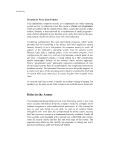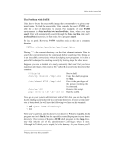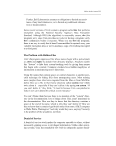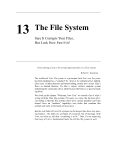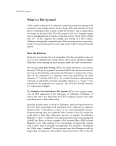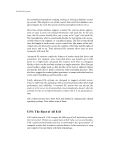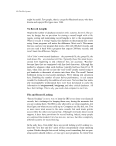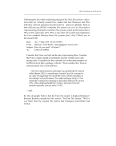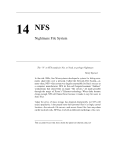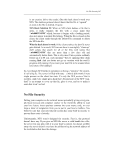History of the Plague 5 security, so that the actions of one user could not affect another. Its goal was even there in its name: Multics, short for MULTiplexed Information and Computer System. Multics was designed to store and retrieve large data sets, to be used by many different people at once, and to help them communicate. It likewise protected its users from external attack as well. It was built like a tank. Using Multics felt like driving one. The Multics project eventually achieved all of its goals. But in 1969, the project was behind schedule and AT&T got cold feet: it pulled the plug on its participation, leaving three of its researchers—Ken Thompson, Dennis Ritchie, and Joseph Ossanna—with some unexpected time on their hands. After the programmers tried unsuccessfully to get management to purchase a DEC System 10 (a powerful timesharing computer with a sophisticated, interactive operating system), Thompson and his friends retired to writing (and playing) a game called Space Travel on a PDP-7 computer that was sitting unused in a corner of their laboratory. At first, Thompson used Bell Labs’ GE645 to cross-compile the Space Travel program for the PDP-7. But soon—rationalizing that it would be faster to write an operating system for the PDP-7 than developing Space War on the comfortable environment of the GE645—Thompson had writ- ten an assembler, file system, and minimal kernel for the PDP-7. All to play Space Travel. Thus Unix was brewed. Like scientists working on germ warfare weapons (another ARPA-funded project from the same time period), the early Unix researchers didn’t real- ize the full implications of their actions. But unlike the germ warfare exper- imenters, Thompson and Ritchie had no protection. Indeed, rather than practice containment, they saw their role as an evangelizers. Thompson and company innocently wrote a few pages they called documentation, and then they actually started sending it out. At first, the Unix infection was restricted to a few select groups inside Bell Labs. As it happened, the Lab’s patent office needed a system for text pro- cessing. They bought a PDP-11/20 (by then Unix had mutated and spread to a second host) and became the first willing victims of the strain. By 1973, Unix had spread to 25 different systems within the research lab, and AT&T was forced to create the Unix Systems Group for internal support. Researchers at Columbia University learned of Unix and contacted Ritchie for a copy. Before anybody realized what was happening, Unix had escaped.
6 Unix Literature avers that Unix succeeded because of its technical superiority. This is not true. Unix was evolutionarily superior to its competitors, but not technically superior. Unix became a commercial success because it was a virus. Its sole evolutionary advantage was its small size, simple design, and resulting portability. Later it became popular and commercially successful because it piggy-backed on three very successful hosts: the PDP-11, the VAX, and Sun workstations. (The Sun was in fact designed to be a virus vector.) As one DEC employee put it: From: CLOSET::E::PETER 29-SEP-1989 09:43:26.63 To: closet::t_parmenter Subj: Unix In a previous job selling Lisp Machines, I was often asked about Unix. If the audience was not mixed gender, I would sometimes compare Unix to herpes—lots of people have it, nobody wants it, they got screwed when they got it, and if they could, they would get rid of it. There would be smiles, heads would nod, and that would usually end the discussion about Unix. Of the at least 20 commercial workstation manufacturers that sprouted or already existed at the time (late 1970s to early 1980s), only a handful— Digital, Apollo, Symbolics, HP—resisted Unix. By 1993, Symbolics was in Chapter 11 and Apollo had been purchased (by HP). The remaining companies are now firmly committed to Unix. Accumulation of Random Genetic Material Chromosomes accumulate random genetic material this material gets hap- pily and haphazardly copied and passed down the generations. Once the human genome is fully mapped, we may discover that only a few percent of it actually describes functioning humans the rest describes orangutans, new mutants, televangelists, and used computer sellers. The same is true of Unix. Despite its small beginnings, Unix accumulated junk genomes at a tremendous pace. For example, it’s hard to find a ver- sion of Unix that doesn’t contain drivers for a Linotronic or Imagen type- setter, even though few Unix users even know what these machines look like. As Olin Shivers observes, the original evolutionary pressures on Unix have been relaxed, and the strain has gone wild.

























































































































































































































































































